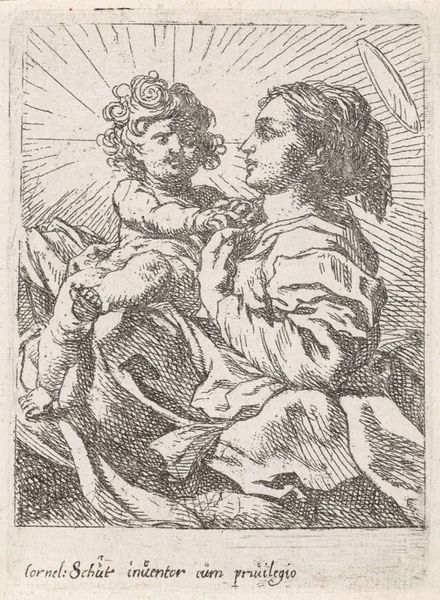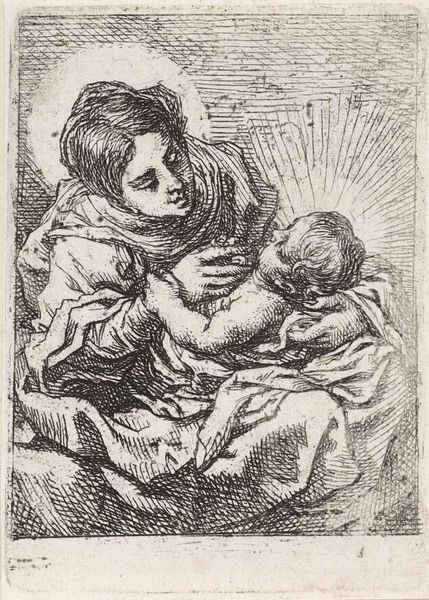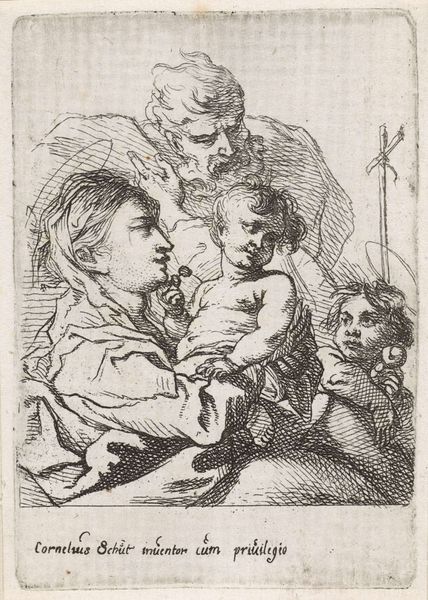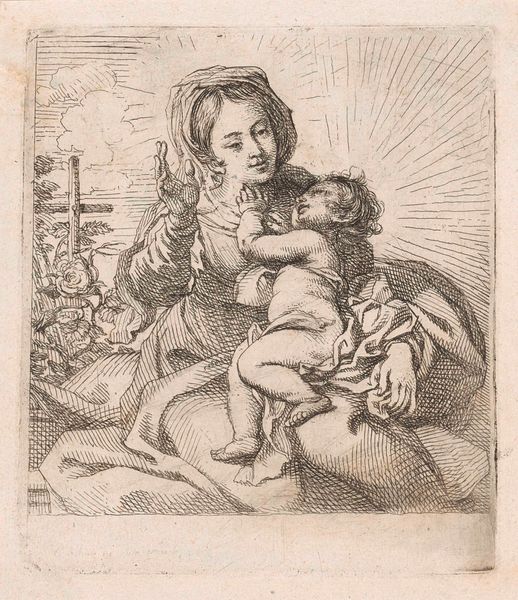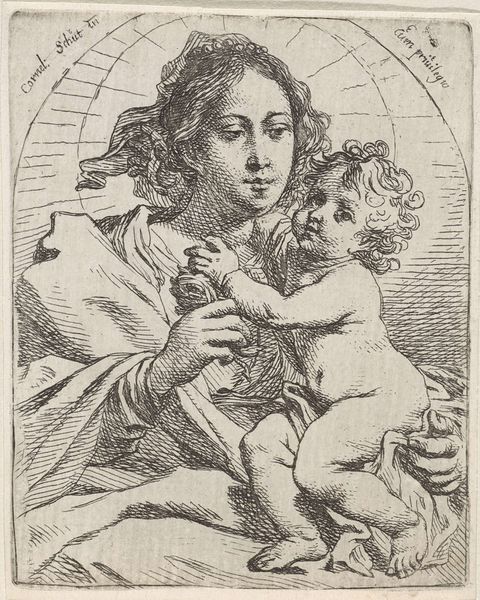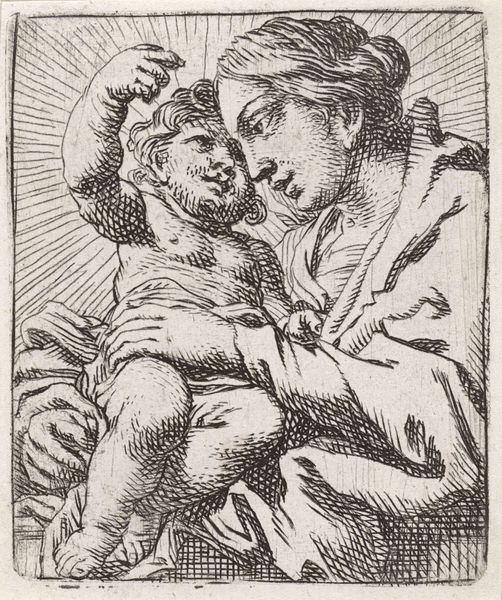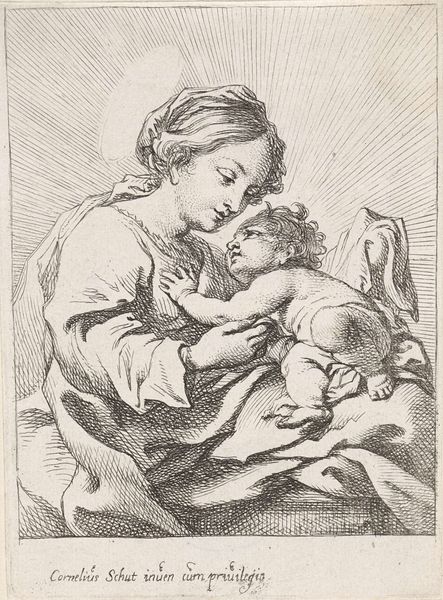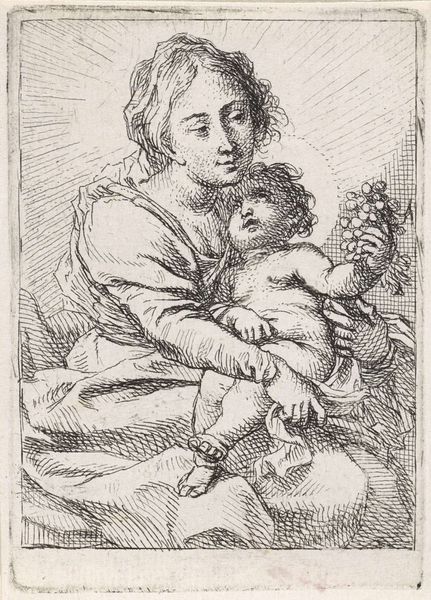
print, engraving
#
portrait
#
baroque
#
pen drawing
# print
#
old engraving style
#
figuration
#
line
#
history-painting
#
engraving
Dimensions: height 98 mm, width 71 mm
Copyright: Rijks Museum: Open Domain
This tiny Madonna and Child was made by Cornelis Schut, probably in the early 17th century, using the technique of etching. With its intricate lines, etching was a printmaking process that demanded careful labor, and skilled hands. A metal plate, likely copper, would have been coated with a waxy substance, through which the artist scratched an image. The plate was then bathed in acid, which bit into the exposed metal, creating delicate grooves. These grooves would then hold ink, and the image transferred to paper through a press. Look closely, and you’ll see how the very directness of the etched line lends itself to a sense of immediacy. The artist, in a single mark, can convey light, shadow, and form. Because printmaking allowed for the creation of multiple images, works like this circulated widely, making art accessible at a relatively low price. The artistic process, with its skilled labor and material inputs, reflects the expanding market for art during the early modern period. Considering the material and method of its making is key to understanding this beautiful artwork.
Comments
No comments
Be the first to comment and join the conversation on the ultimate creative platform.

